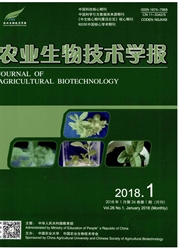

 中文摘要:
中文摘要:
巨噬细胞(macrophages,Mφ)在机体正常发育、体内平衡、组织修复和对病原体的免疫反应中起着重要作用。为了研究豚鼠(Cavia porcellus)Mφ在结核免疫中的作用及机制,本研究通过淀粉肉汤溶液预刺激的方法分离培养了豚鼠腹腔Mφ,并进行了细胞形态学观察、细胞活力、吞噬功能、非特异性酯酶染色和细胞表面特异性抗原表达检测等一系列鉴定。在此基础上,利用结核分枝杆菌(Mycobacteriumtuberculosis,MTB)卡介苗(BacillusCalmette—Gu6rin,BCG)感染分离培养的Mqo,并分析BCG对Mφ NO的产生和细胞凋亡的影响。结果表明,分离培养的腹腔Mφ具有Mφ所特有的形态特征、较强细胞活力和吞噬能力,并可检测到特异性的白细胞分化抗原14(cluster of differentiation14,CD14)、CD40和CD68等的表达。与未感染的对照组相比,BCG感染24h后Mφ产生的NO极显著增加(P〈0.01),细胞的凋亡率也极显著升高(P〈0.01)。表明淀粉肉汤溶液刺激的方法可成功获取豚鼠腹腔Mφ,同时证实BCG感染后能诱导其产生的NO增多,并且细胞凋亡率增加,提示其可能在抗结核免疫中起重要作用。研究结果为MTB和Mφ相互作用研究提供细胞模型和数据支撑。
 英文摘要:
英文摘要:
Macrophages are key cells associated with innate immunity, pathogen containment and modulation of the immune response and also the key regulators of tissue repair, regeneration and fibrosis. Commonly used model systems for studying macrophage biology have centered on macrophage-like leukemic cell lines, primary macrophages derived from model organisms and primary macrophages differentiated from blood monocytes. Although these cells have provided important insights into macrophage-associated biology, there are issues that need consideration. The primary drawback of understanding macrophage biology is that reliable and scalable macrophage models for cellular and genetic studies is scarce, limiting their utility in genetic studies. Based on these, in order to elucidate the role and mechanism of guinea pig macrophages in tuberculosis immunization, in the present study, guinea pig peritoneal macrophages were isolated and characterized by using the following methods: Morphological observation was by phase contrast microscope, cell viability analysis was performed using Trypan blue staining method, phagocytosis assay was carried out using the method of swallowing ink particles, the expression of intracellular enzyme was detected using α- naphthol acetate esterace (α-NAE) staining method, and the expression of cell surface specific antigen analysis was detected by flow cytometry. Furthermore, in order to study the effect of Bacillus Calmette-Gudrin (BCG) on guinea pig macrophage apoptosis and its production of nitric oxide (NO), guinea pig macrophage was infected by BCG in vitro. The results showed that the guinea pig macrophage performed multiple cell morphology and maintained the characteristic of macrophage-specific morphology, which resembled round shape, oval shape, spindle shape and irregular shape under the microscope. Pseudopodium and bulge were observed in some of the cells. The cells had a large amount of cytoplasm and large nuclei. The result of Giemsa staining showed that the nuclei of macroph
 同期刊论文项目
同期刊论文项目
 同项目期刊论文
同项目期刊论文
 期刊信息
期刊信息
